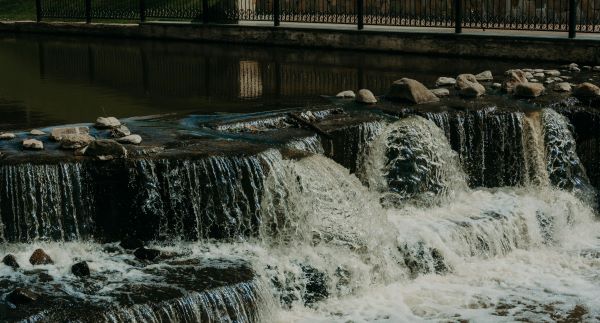Erosion threatens many lakefront properties, putting homes and land at risk. Waves, wind, and water currents can wear away shorelines over time. This can lead to property loss and damage to structures near the water’s edge. Effective erosion control techniques can protect lakefront properties and preserve natural habitats.
Landowners have several options to combat erosion. These range from planting vegetation to building seawalls. Each method has pros and cons. The best choice depends on the specific site conditions and local regulations. Some techniques work better in certain areas than others.
Protecting lakefront property requires planning and ongoing care. Regular checks and upkeep of erosion control measures are important. This helps catch small issues before they become big problems. With the right approach, lakefront owners can enjoy their properties for years to come.
Key Takeaways
- Erosion threatens lakefront properties but can be managed with proper techniques
- Various control methods exist, each suited for different site conditions
- Regular monitoring and maintenance are essential for long-term shoreline protection
Fundamentals of Erosion on Lakefront Properties
Erosion poses a major threat to lakefront properties. It can damage shorelines, alter ecosystems, and reduce property values. Understanding the causes and impacts of erosion is key for lakefront owners.
Defining Erosion and Its Causes
Erosion is the wearing away of land by water, wind, or ice. On lakefronts, water is the main culprit. Waves hit the shore and carry away soil and rocks. Boat wakes can speed up this process.
Rain and runoff also cause erosion. They wash away loose soil as they flow towards the lake. Ice can push up onto shores and scrape away land when lakes freeze and thaw.
Rising water levels increase erosion risk. They let waves reach higher ground that wasn’t eroded before.
Impacts of Erosion on Lakefront Ecology
Erosion harms plants and animals near the shore. It washes away soil that plants need to grow. This leaves less food and shelter for wildlife.
Eroded soil muddies the water. This blocks sunlight from reaching underwater plants. Fish and other lake creatures lose food and places to live.
Erosion can release stored nutrients into the lake. This can cause algae blooms. These use up oxygen in the water and may hurt fish.
Losing shoreline plants means less natural filtering of runoff. This lets more pollutants enter the lake.
Assessing Erosion Risk Factors
Some lakefront areas face higher erosion risks. Steep banks are more prone to erosion than gentle slopes. Sandy or loose soils wash away easier than clay or rock.
Areas with little plant cover erode faster. Plants’ roots hold soil in place. Their leaves slow down raindrops and waves.
The shape and size of a lake affect erosion. Larger lakes have bigger waves. Long, narrow lakes can funnel wind and create strong waves.
Human activities raise erosion risks. Clearing natural vegetation, building close to the shore, and creating paths to the water can all speed up erosion.
Erosion Control Strategies
Effective erosion control for lakefront properties involves a mix of natural and built solutions. These methods protect shorelines while preserving the beauty and function of waterfront areas.
Vegetative Solutions for Erosion Control
Plants play a key role in stopping erosion on lakeshores. Deep-rooted native plants help hold soil in place. Their roots form a strong network that resists water and wind erosion.
Wetland plants like rushes and sedges work well in shallow water areas. On dry land, native grasses and shrubs are good choices. Trees like willows and alders can be planted farther from the water’s edge.
These plants also create habitats for wildlife. They filter runoff and improve water quality. A buffer of native plants along the shoreline looks natural and needs little care once established.
Structural Methods for Shoreline Stabilization
Hard structures can provide strong erosion protection for lakefront properties. Common options include:
- Riprap: Large rocks placed along the shoreline
- Seawalls: Vertical walls made of concrete or steel
- Bulkheads: Wood, vinyl, or concrete walls that hold soil back
- Gabions: Wire cages filled with rocks
These structures reflect wave energy and prevent soil loss. They work best in high-energy areas with strong waves or currents. But they can be expensive and may harm natural habitats if not designed carefully.
Proper sizing and placement are crucial for these methods to work well. Professional help is often needed to install them correctly.
Integrated Erosion Management Approaches
The best erosion control plans often combine plants and structures. This approach, called ‘living shorelines’, balances protection and natural function.
A typical design might use:
- Native plants on the upper bank
- A low wall or rocks at the waterline
- Aquatic plants in shallow water
This mix provides strong erosion control. It also creates wildlife habitat and improves water quality. The natural look fits well with the lake environment.
Regular checks and upkeep are important. Property owners should watch for signs of damage or wear. Quick fixes can prevent bigger problems later on.





